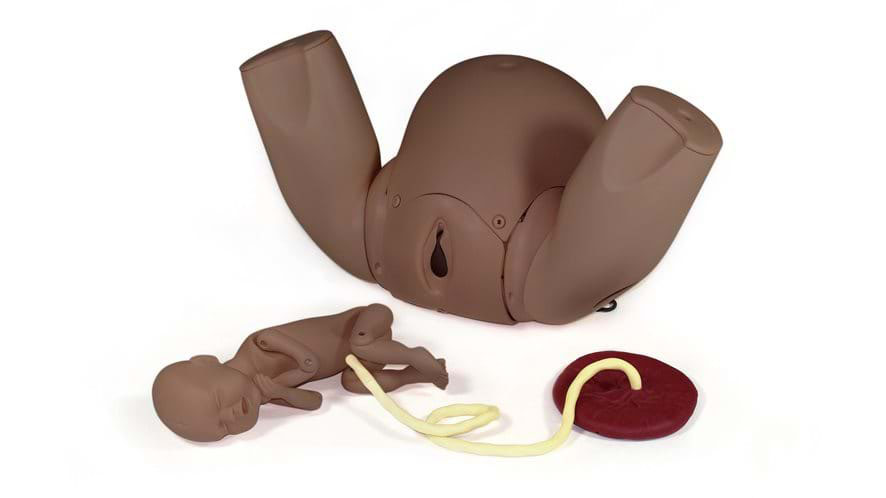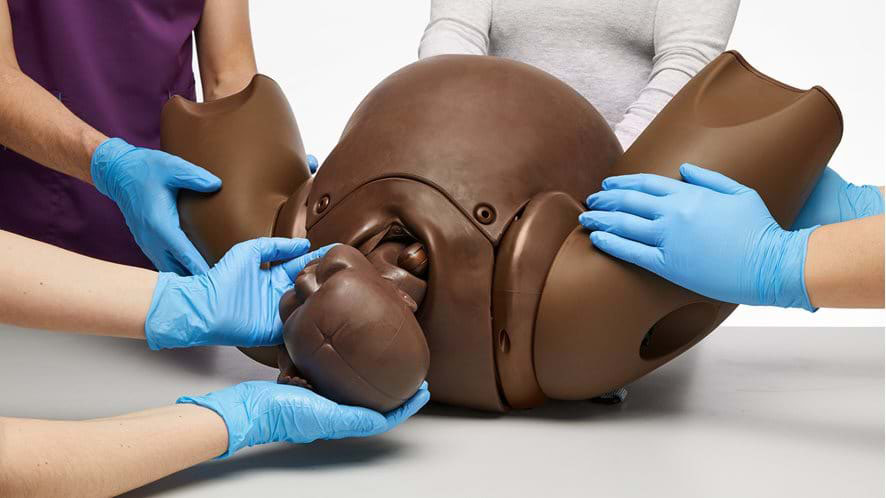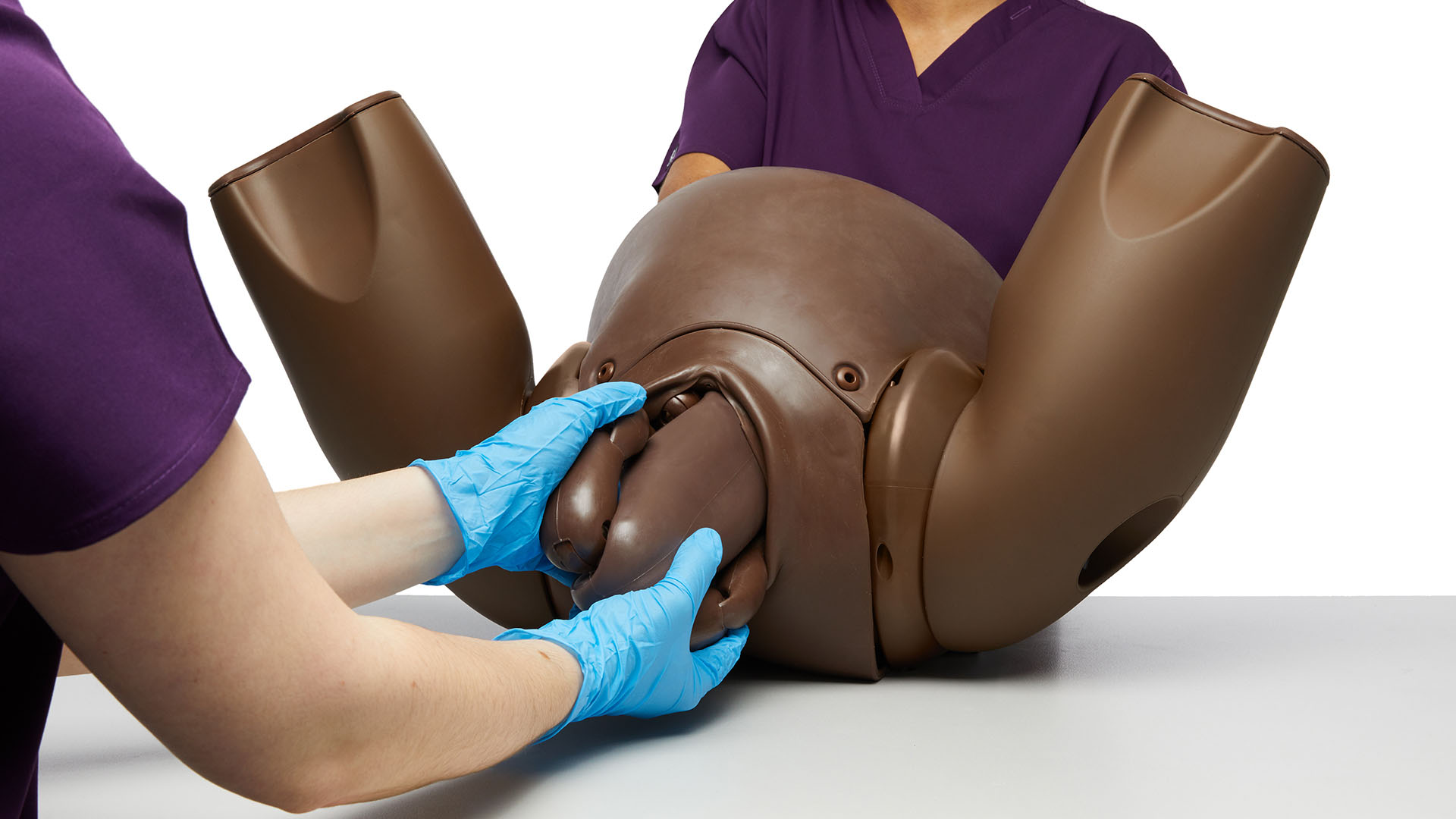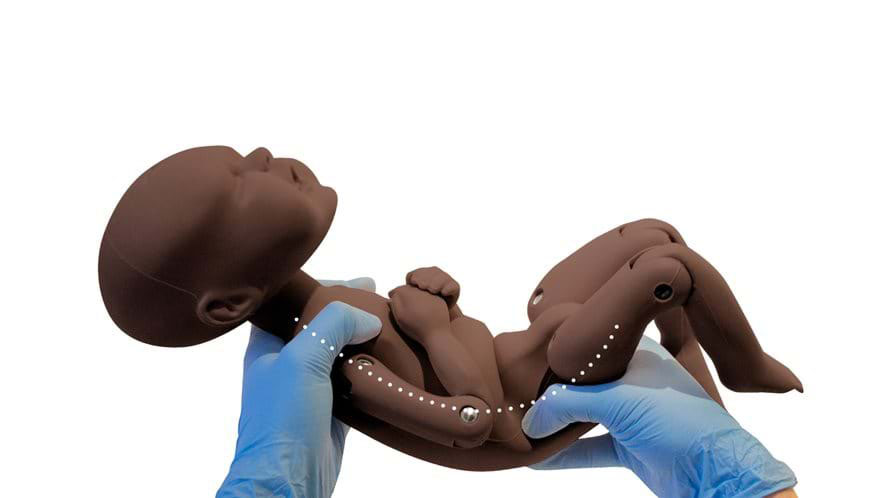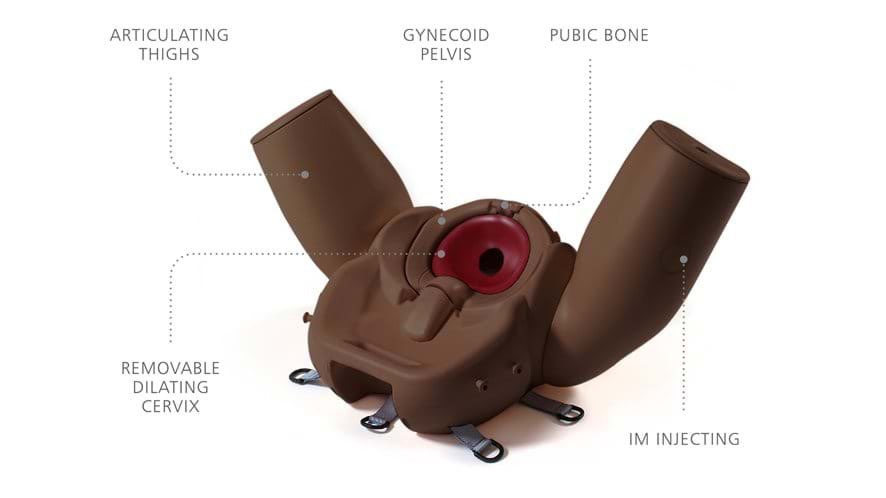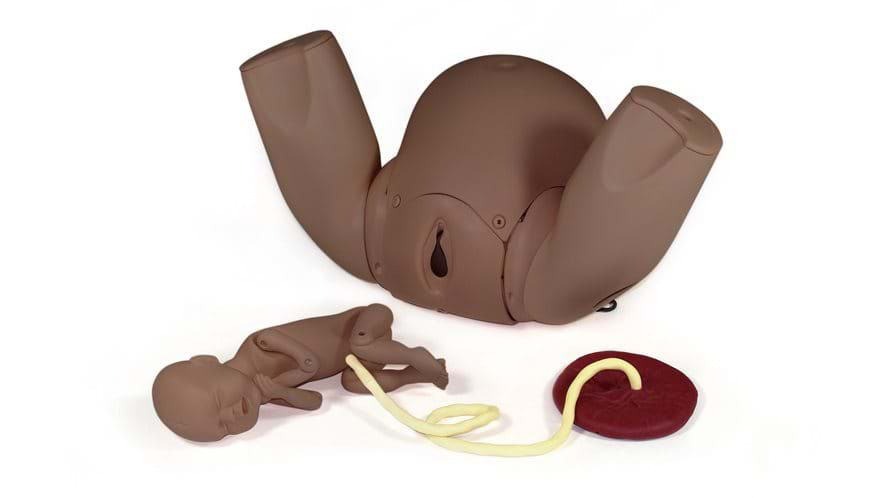Prompt Flex Birthing Simulator - Standard, Dark
The Standard Limbs & Things' PROMPT Flex Birthing Simulator is an ideal training solution for routine and non-routine deliveries. With the enhanced PROMPT Flex Standard Baby, included, training offers improved realism in difficult birthing scenarios such as shoulder dystocia and breech births.
See more detailsDiagnostic / Procedural Skills, Midwifery / Obstetrics / Gynaecology, Nursing, OSCEs, Postgraduate Clinical Skills, Trauma / Emergency / Acute Care, Undergraduate Clinical Skills.
Skills
- Training and practice in the following types of birth:
- Normal
- Vaginal breech
- Shoulder dystocia
- Vaginal assisted (forceps and vacuum devices)
- Third stage of labor
- Cord prolapse
- Urinary catheter placement
- IM injection
- Communication and teamwork skills
Features
- Now available with Augmented Reality, trainees can review labelled anatomy and follow procedure animations via the FREE ART app
- Test the app out for free on your device, links for Android and iOS can be found in the Download tab, or search “L&T ART” in your app store
- With the addition of the Augmented Reality Training Mat (ART Mat for short), sessions can be hands-on and self-study
- Compatible tablets or phones with the ART app can scan the model and view the Augmented Reality animation overlay while other students are doing practical work
- PROMPT Flex trainers offer a versatile platform for obstetric training
- As a stand alone trainer it allows for practical skills practice for common birthing scenarios
- This birthing trainer, and modules from the PROMPT Flex range, can be used with a simulated patient to develop communication skills
- Simulation training for maternity staff is linked to improved management and neonatal outcomes of births complicated by shoulder dystocia
- A range of modules are available to upgrade the birthing simulator for more complex scenarios
- These interchangeable modules are designed to work with the PROMPT Flex’s base Birthing Mother unit with minimal set-up, to offer a cost effective labour and delivery training solution
- As part of the PROMPT Flex birthing range, this set can be used with the following modules:
- Postpartum Hemorrhage (PPH)
- Enhanced C-Section
- Cervical Dilatation & Effacement (CD&E)
- Cervical Cerclage
- Lower Legs
- Baby has improved shoulder and hip joints
- Comes with wheeled carry case for safe storage and transportation
- Realism:
- Realistic pelvic floor
- Suitable for use with a Simulated Patient
- Improved Baby model with bend at the thoraco-lumbar region
- Birthing Mother:
- Articulated thighs help to demonstrate Gaskin and McRobert’s procedures
- Handle on the base of the mannikin for operator use during labor simulation
- Strap fastenings to secure PROMPT simulator to a bed or bench during training
- Can be used with additional modules to extend training simulations
- Anatomy of the PROMPT birthing mother:
- Articulated thighs
- Perineum, birthing canal, and cervix
- Pubic bone and gynaecoid pelvis
- PROMPT Baby:
- Baby has a bend at the thoraco-lumbar region
- Improved articulation of the joints offers enhanced realism for difficult birthing scenarios, such as shoulder dystocia
- Anatomy of the PROMPT Baby:
- Clavicles
- Suture lines and fontanelles
- Umbilical cord and placenta
- Bend at the thoraco-lumbar region of the Standard PROMPT Flex Baby (unique to this model)
Evidence
“Improving Neonatal Outcome Through Practical Shoulder Dystocia Training.”
Draycott, T. J., J. F. Crofts, et al. (2008). “Improving Neonatal Outcome Through Practical Shoulder Dystocia Training.” Obstet Gynecol 112(1): 14-20.
Objective: To compare the management of neonatal injury associated with shoulder dystocia before and after introduction of mandatory should dystocia simulation training.
Conclusion: The introduction of shoulder dystocia training for all maternity staff was associated with improved management and neonatal outcomes of births complicated by shoulder dystocia.
“Management of Shoulder Dystocia: Skill Retention 6 and 12 Months After Training.”
Crofts, J. F., C. Bartlett, et al. (2007). “Management of Shoulder Dystocia: Skill Retention 6 and 12 Months After Training.” Obstet Gynecol 110(5): 1069-1074.
“Shoulder dystocia training using a new birth training mannequin.”
Crofts, J. F. A., Georgios; Read, Mike; Sibanda, Thabani; Draycott, Timothy J. (2005). “Shoulder dystocia training using a new birth training mannequin.” BJOG: An International Journal of Obstetrics & Gynaecology 112(7): 997-999.
Includes
- Birthing Mother (with Upper Legs)
- Standard Baby
- Placenta
- Abdomen for Prompt Flex
- Perineum & birth Canal for Prompt Flex
- Carrying case
Cleaning & Safety
- Clean lubricant from all of the mother and baby surfaces with a warm damp cloth
- Allow components to dry thoroughly before storing away
- Use recommended lubricant and simulated blood, other products may weaken or damage your simulator
- Always lubricate the cervix, birth canal and baby before each birthing simulation to avoid damaging the skin
- This product is latex free
Manufacturer
Limbs & Things
Related Spares and Repairs
| SKU | Product Name | Price | Action |
|---|---|---|---|
| ALT60133 | ART Mat for PROMPT Flex Birthing Simulator | Price on request | View Product |
| ALT10199 | Birthing Lubricant | Price on request | View Product |
| ALT00020 | Concentrated Venous Blood – Starter Pack (2) | Price on request | View Product |
| ALT00021 | Concentrated Venous Blood Refill | Price on request | View Product |
| ALT80123 | Placenta (1) | Price on request | View Product |
| ALT80202 | Prompt Flex Cervial Dilation & Effacement Module (CD&E), Dark | Price on request | View Product |
| ALT80280 | Prompt Flex Cervical Cerclage Module, Dark (CCM) | Price on request | View Product |
| ALT80400 | Prompt Flex Enhanced Caesarean Section Module, Dark (ECSM) | Price on request | View Product |
| ALT80212 | Prompt Flex Postpartum Haemorrhage Kit, Dark | Price on request | View Product |
